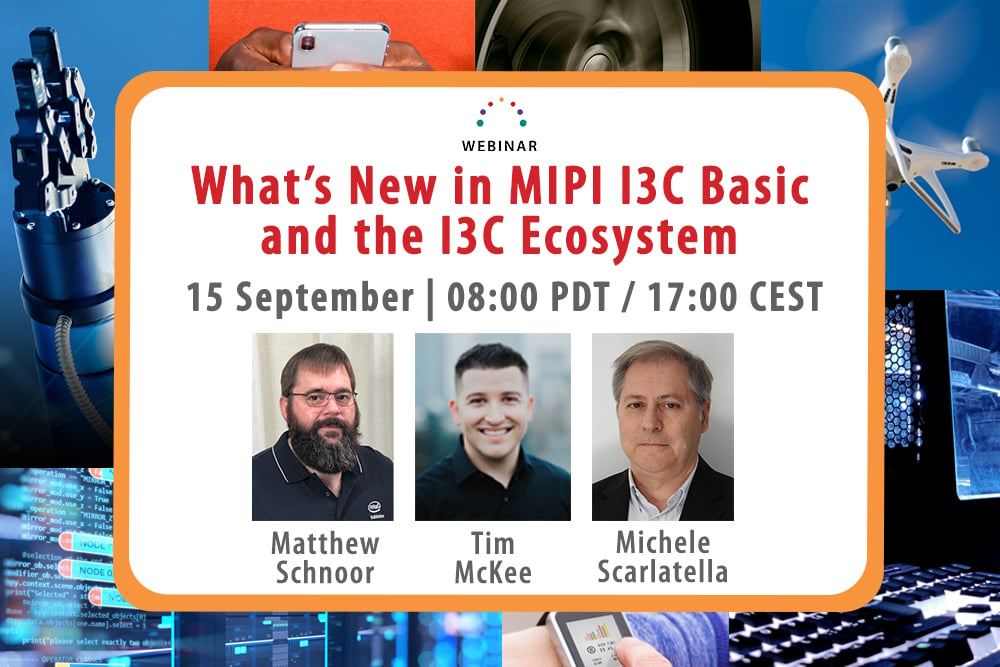2 min read
MIPI Webinar: What’s New in MIPI I3C Basic and the I3C Ecosystem
![]() MIPI Alliance
:
15 September 2021
MIPI Alliance
:
15 September 2021

- Resources
- Webinars & Workshops
Webinar Overview
This webinar covers recent updates to the MIPI I3C®, I3C Basic℠ and I3C HCI℠ specifications, and explains how the unique power-saving features of MIPI I3C can enable ultra-low-power designs.
The MIPI I3C/I3C Basic specifications provide a scalable, medium-speed, utility and control bus interface for connecting peripherals to application processors, streamlining integration and improving cost efficiencies. As the successor to the legacy I2C interface, I3C gives developers new capabilities to craft innovative designs for a broad array of products—from smartphones, to wearables, to systems in automobiles and server environments.
MIPI Alliance recently released the first update to its publicly available MIPI I3C Basic specification (v1.1.1), as well as additional updates to the core I3C specification (v1.1.1) and its I3C Host Controller Interface specification (v1.1). An I3C HCI Linux driver was also implemented in the 5.11 kernel late last year.
The first half of this webinar will provide a brief introduction to the three specifications, along with an overview of what’s new in each, with particular focus on I3C Basic v1.1.1, which contains a number of key enhancements since its original introduction.
The second part of the webinar will cover the more practical aspects of the I3C specifications, highlighting key power-saving features (not supported by I2C or SPI) that can enable highly power-efficient designs that satisfy ultra-low-power use cases. The presentation will include a comparison of I3C’s power efficiency against legacy interfaces, and example use cases to demonstrate the use of “hot join” to power up and down a system, and “routing devices” to enable the coexistence of high and low activity I3C buses.
Who Should Attend
Design engineers, test engineers, post silicon validation engineers, system design engineers, engineering managers, application engineers, SoC emulation engineers, RTL engineers, firmware engineers and hardware engineers, etc.
Presenters
 |
Tim McKee Since the beginning of his career, Tim has worked with many standards bodies, including USB-IF, PCI-SIG, CXL Consortium and of course MIPI Alliance. Through his work, he has held multiple positions, including USB Power Delivery Compliance chairman, and various vice chair and contributor positions. These positions have not only provided great experience, but they also have positioned him to be able to expand I3C into new areas moving forward. Tim holds a bachelor of science degree in electrical and computer engineering from Oregon State University. |
 |
Matthew Schnoor |
 |
Michele Scarlatella |

